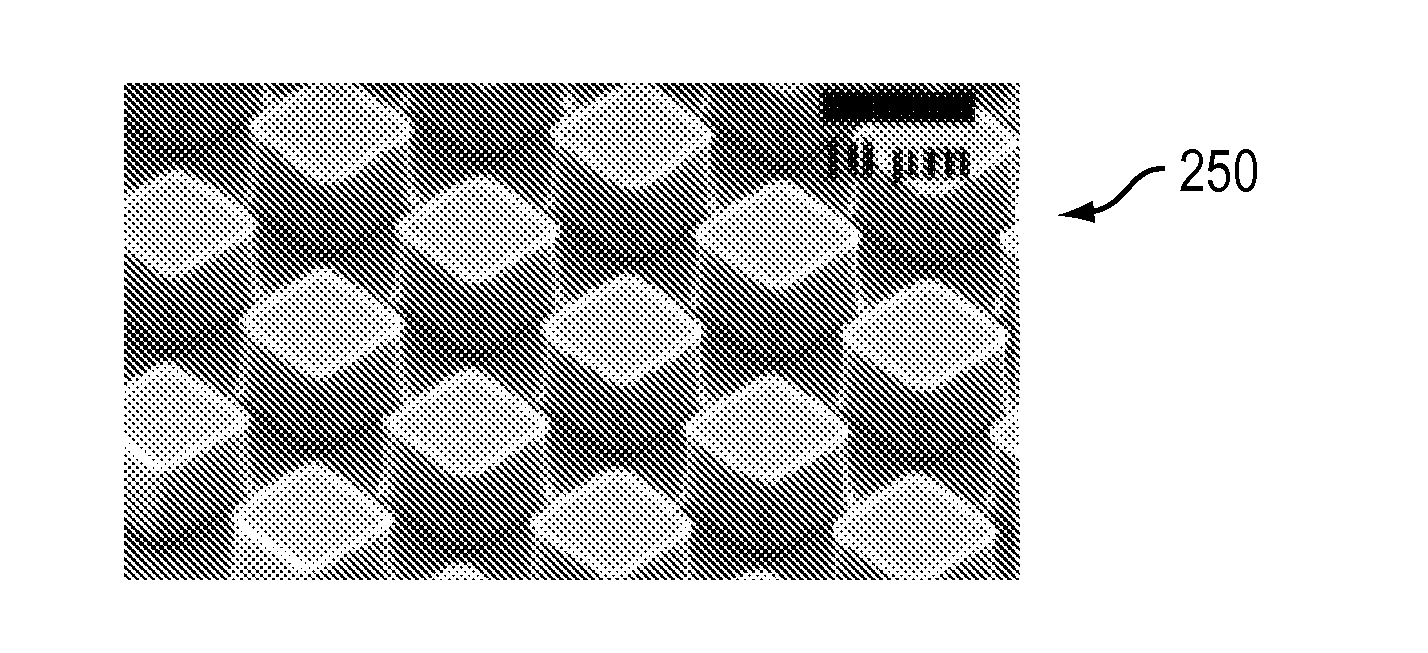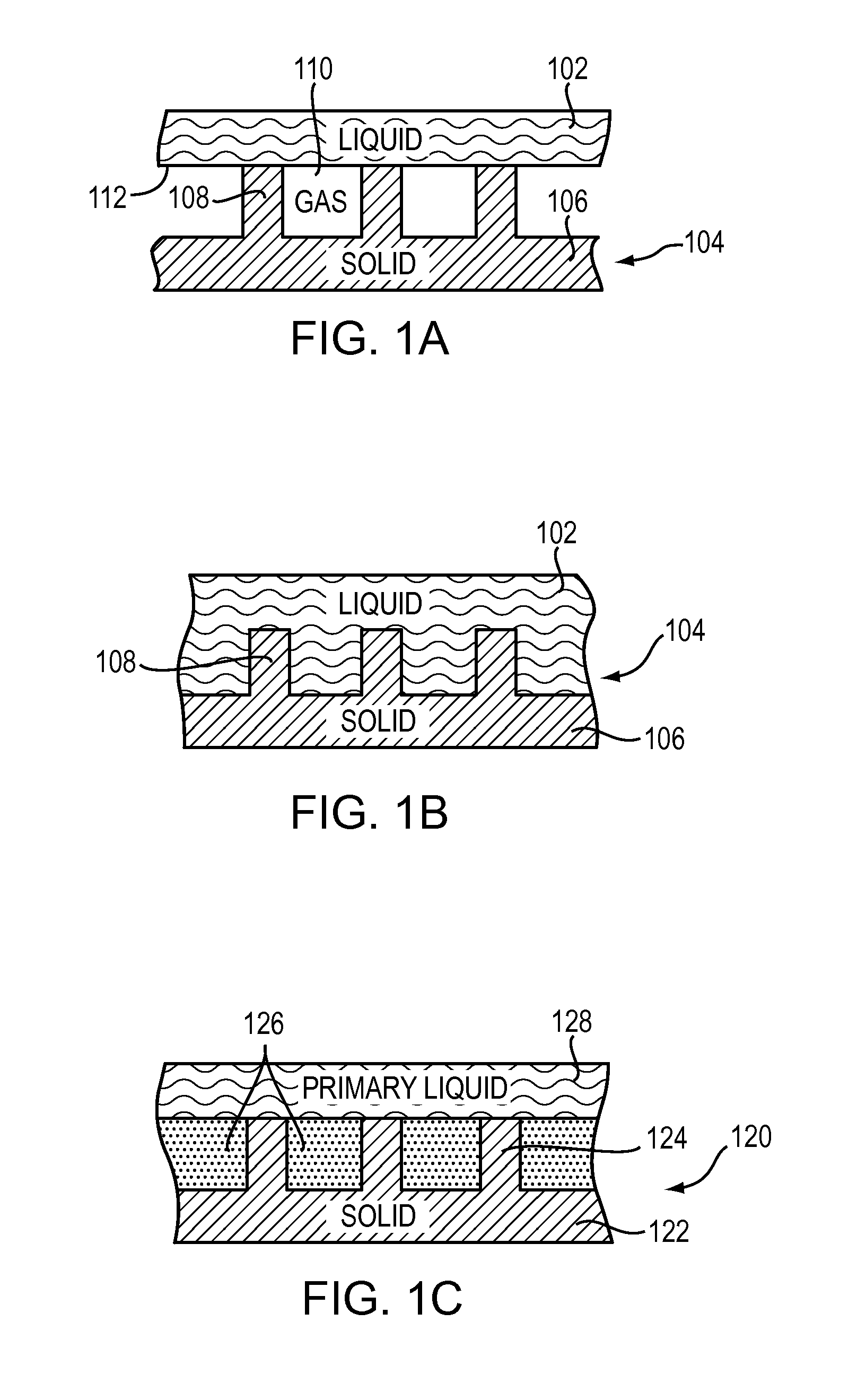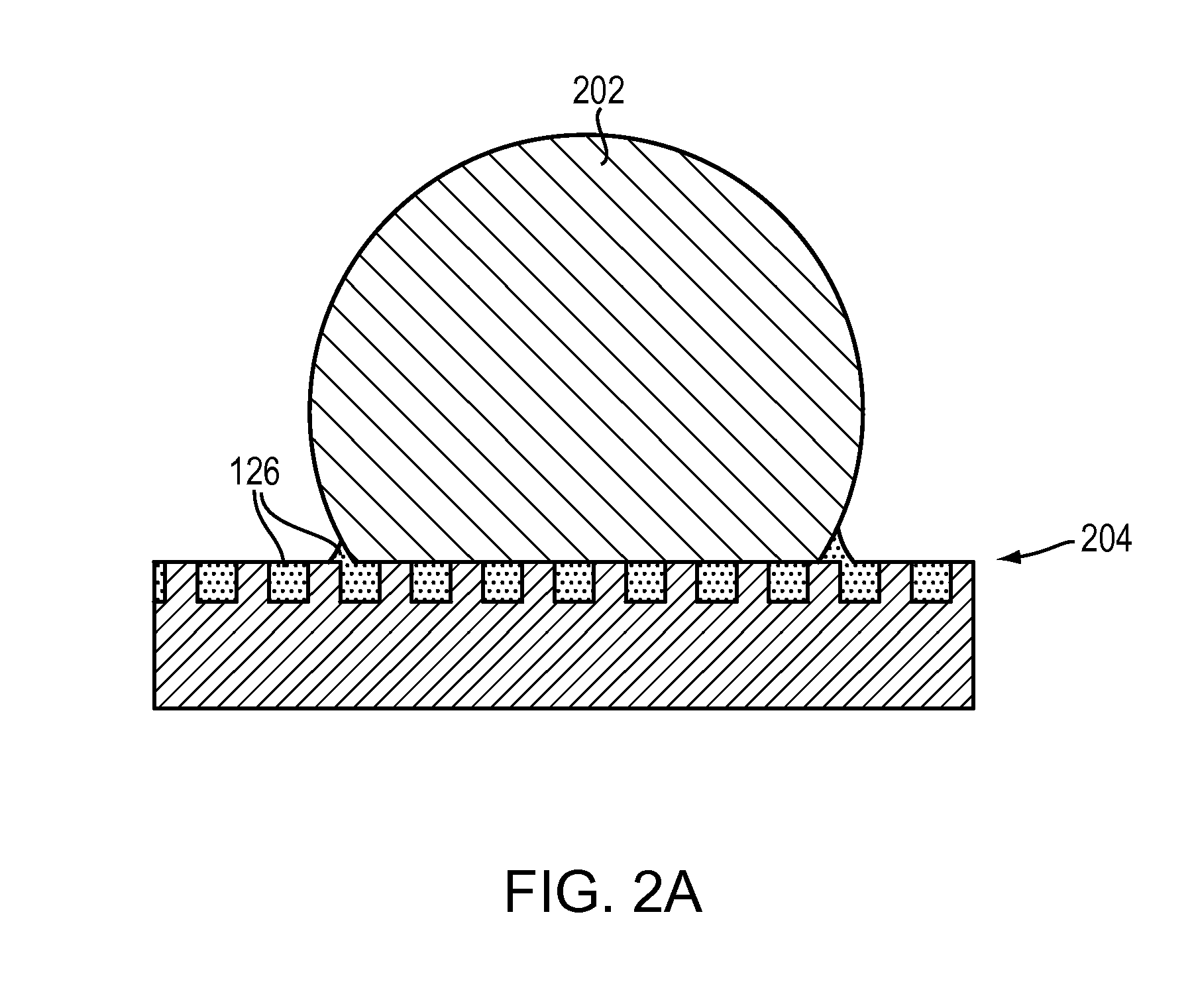Liquid-impregnated surfaces, methods of making, and devices incorporating the same
a liquid impregnated surface and liquid technology, applied in the field of non-wetting and low adhesion surfaces, can solve the problems of affecting the stability of the surface, so as to reduce drag, inhibit corrosion, and enhance the non-wetting ability.
- Summary
- Abstract
- Description
- Claims
- Application Information
AI Technical Summary
Benefits of technology
Problems solved by technology
Method used
Image
Examples
Embodiment Construction
[0085]FIG. 3 includes a photograph of a microtextured surface 302, in accordance with certain embodiments of the invention. The surface 302 was made of silicon and includes a square pattern of 10 μm pillars spaced 25 μm apart. As depicted, a bottom portion 304 of the surface 302 was impregnated with hexadecane (an impregnating liquid), while a top portion 306 was impregnated with air (i.e., no impregnating liquid). An edge 308 of the hexadecane defines a boundary between the top portion 306 and the bottom portion 304. Impregnation with hexadecane was achieved by (i) dipping the bottom portion 304 of surface 302 in a bath of hexadecane and (ii) withdrawing the bottom portion 304 from the hexadecane at a slow rate (10 mm / min), with the help of a dip coater. The impregnation was robust as the hexadecane remained in place while being sprayed with water jets having an impact velocity of approximately 5 m / s. Contact angle hysteresis and roll-off angle for a 7 μL water droplet were measure...
PUM
| Property | Measurement | Unit |
|---|---|---|
| Length | aaaaa | aaaaa |
| Length | aaaaa | aaaaa |
| Viscosity | aaaaa | aaaaa |
Abstract
Description
Claims
Application Information
 Login to View More
Login to View More - R&D
- Intellectual Property
- Life Sciences
- Materials
- Tech Scout
- Unparalleled Data Quality
- Higher Quality Content
- 60% Fewer Hallucinations
Browse by: Latest US Patents, China's latest patents, Technical Efficacy Thesaurus, Application Domain, Technology Topic, Popular Technical Reports.
© 2025 PatSnap. All rights reserved.Legal|Privacy policy|Modern Slavery Act Transparency Statement|Sitemap|About US| Contact US: help@patsnap.com



